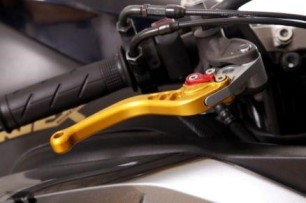General Insurance Blogs, Articles & Updates by - Magma HDI
Have us call you
- RENEW YOUR POLICY
- BUY NEW POLICY

Here are a few safety measures that parents should ensure when sending their kids back to school
With the COVID-19 situation getting relaxed, the world is returning to the way it used to be. As per the recent orders from several State Governments, schools have been granted permission to reopen and function regularly. It means your child’s back-to-school days are here again after a long pause. But things are not the same as they were before COVID-19. Here we have compiled a quick list of important safety measures to ensure when you are sending your kids back to school.
1. Make sure school staff are fully vaccinated:
Before sending your child to school, ensure that the school follows the COVID-19 protocols and that all the school staff are fully vaccinated. If not done, we recommend that you avoid sending your child to school. As a parent, you should ensure that the school staff and the authorities are vaccinated and show no flu or cold symptoms. Always check this with the authorities before sending your kid to school.
2. Educate your child about the safety norms:
Before you send your child out in any public space, give them enough information about the hygiene and safety measures they must follow. Sit with your child and explain the infection and how it affects health. Teach your children how to maintain the appropriate Covid behaviour in school. For example, they should know how to wash their hands properly with soap, responsibly use sanitisers, and maintain a safe physical distance from others.
3. Prepare a kit for your child:
With the pandemic situation being so uncertain, it is suggested that you are ready for what is to come. So, for this, make sure that you provide your child with all the safe belongings they will need while going to school. Prepare a kit for them, including a sanitiser, 3-4 disposable masks, an antiseptic soap bar, a spray sanitiser for benches and tables, and a pair of surgical gloves. While preparing a safety kit, make them aware of how and when to use it and dispose of the used masks or gloves.
4. Get in touch with school authorities:
Before you start planning to send your child to school, you must first ensure that the school authorities have taken strict cleanliness drives and only call the fully vaccinated staff. As a parent, you have to confirm that they have proper standard operating procedures for sanitation purposes and the campus is clean and hygienic. After questioning the school authorities, if you find that they do not have these guidelines in place, you should consider not sending your child to the school until they do so.
As a parent, sending your kid back to school after the pandemic brings a lot of fear. You never know where your kid is touching, sitting, or who they are getting in contact with. Therefore, take adequate safety measures to ensure your child stays healthy. Moreover, to secure your children’s health during the crucial pandemic, you must have reliable health insurance. Investing in online health insurance provides you with premium benefits to cover the medical bills. As the saying goes, precaution is always better than cure. Take the precaution today!
Click HERE to get the best deals on online health insurance.
Disclaimer: The information provided above is for illustrative purposes only. To get more details, please refer to policy wordings and prospectus before purchasing a policy.

Top seven scenic driving routes of India to experience a memorable road trip
With the huge influence of Bollywood films, the idea of road trips has prompted strongly among India's youth. Air and train travel just cannot justify the excitement and adventure of road travel. They are a fantastic way to treasure the journey over the destination.
We all saw our share of the unpredictability of life during this pandemic time. Now that the economies have finally opened and the nation breathes, a road trip is an excellent idea to heal your soul. A road trip allows you to tailor your itinerary as per your preferences.
India has numerous picturesque highways where you can roll down the windows, blast the speakers and sing your favourite songs with your friends and family. We’ve put down seven handpicked routes in India to take your four-wheeled companion on an adventure of a lifetime.
1. Bangalore to Ooty:
An escape from Bangalore to Ooty will surely lift your spirits if you are a nature lover who enjoys long drives. The trip is both adventurous and scenically pleasing. You'll come across misty waterfalls, quiet creeks, and rolling green hills as you travel through this route.
2. Chennai to Munnar:
From woodlands brimming with exotic biodiversity, tea and rice plantations to villages and towns bursting with all the hues of life. And the magnificent temples give an excellent example of India's rich architectural past that has been there for many centuries. Chennai to Munnar is a route to look forward to.
3. Manali to Leh:
Famously referred to as Mecca of bikers. This route is also great for driving. It takes you through the beautiful valleys of Himachal Pradesh. You’ll come across a lot of lakes and monasteries along the way as well.
4. Delhi to Nainital:
From the capital of India to the valley of lakes! The treasures of beauty on this route are many and varied. You name anything, and you'll find it here, from exquisite natural beauty to ancient relics. This road trip will surely feed the adventurer inside you.
5. Mumbai to Goa:
The ‘Dil Chahta Hai’ route! Nothing compares to travelling from Mumbai to Goa via the Western Ghats if you enjoy driving. Within a few hundred kilometres, the scenery changes from skyscrapers to shades of green. This route is a visual treat, with blankets of verdant and countless rivers, creeks, dams, and waterfalls dotting the landscape. Coconut trees will start multiplying as you draw close to the state of Goa once you're there. And, you know what to do because what happens in Goa stays in Goa!
6. Darjeeling to Pelling:
On this route, rich tea plantations, beautiful mountains, and gorgeous views on all sides are a treat to the eyes. Visit a tea garden and drink a fresh brew for an instant caffeine boost. The highway is well maintained, providing a pleasant ride altogether, and is lined with various eateries that serve delicious food.
7. Chennai to Pondicherry:
This route, also known as the East Coast Road, is another mesmerising road that should be on your bucket list. This route is one of the finest road journeys in India and is worth checking out for its beaches and lakes. It has 14 hairpin bends, each named after a famous Tamil poet. The track is made even more beautiful by the superb road upkeep and the stunning surroundings.
Give yourself a break from the daily hustle and discover the joy of hidden pleasures through travelling. Through these different routes, we get a chance to explore the best of our nation, right from vibrant culture to the variety of food. But, it is essential to have an ideal car insurance plan and check for your car insurance renewal before heading off on any road trip. Car insurance renewal is a financial duty, and keeping it up-to-date can provide several benefits to you and your valuable possession.
Click HERE to get the best deals on car insurance.
Disclaimer: The information provided above is for illustrative purposes only. To get more details, please refer to policy wordings and prospectus before purchasing a policy.

Here are a few benefits of using biker jackets while riding
Bike riding is one of the most popular activities, especially among the younger and enthusiastic generation. But, riding can be enjoyable only if it is practiced safely. Safety is paramount, and while riding a bike, there must be no compromise. Even if you are travelling short-distance, you need to have all the riding gear to keep you safe.
One such crucial riding essential is the biker jacket. They come in different price ranges, with various features, sizes, and materials from multiple brands that have created their value in the world of bikes and motorsport. But why is a biker jacket important? Here are a few benefits of using biker jackets while riding. This blog will make it easier to understand its importance. Read it till the end.
Advantages of using biker jackets are.
1. Safety is the top priority:
Biker jackets protect your body from various temperatures you might be riding in. They can safeguard you against skin damage or sunburns due to excessive heat and driving under the sun. They can even save you against the cold weather as they are pretty thick, and the material helps you withstand the winds.
Some biker jackets are waterproof, protecting you against the rain. The jackets have extra padding (especially in the shoulder and elbow region), which cushion your body against any injury in case of an accident.
2. Comfort is everything:
Biker jackets are easy to wear, and you don’t have to worry about discomfort when you put them on. And since you get them in various sizes and materials, you can choose according to your comfort and requirements.
3. Style is a factor:
Biker jackets have a certain sense of style. They complete the ensemble of a rider and give you a feel of professionalism and passion. As the outfits are important, they give you the confidence to accomplish a job. And biker jackets provide you with a feeling of an experienced rider and increase your style quotient. Consider purchasing a nice biker jacket as an investment in a statement piece that you can pull off for years to come.
4. Easy maintenance:
Biker jackets are usually made of materials that don’t need high maintenance or frequent exterior washing. They are generally waterproof and can easily wipe clean. You don’t need to wash it every time, but you can also opt for dry cleaning services to remove dirt and sweat.
These are a few benefits of using biker jackets while riding. Other riding gears that you need to include are motorcycle helmets, boots, pants, and gloves. These accessories keep you safe, protect your body against injuries in unfortunate situations and complete the rider ensemble.
Travelling on your bike can only be possible when you maintain it properly and protect it against damages in unprecedented circumstances. If not, it can put you and your bike at risk. Therefore, purchase bike insurance that provides you financial protection in the best way possible, and covers the expenses on your bike under challenging times.
Click HERE to know more about buying bike insurance.
Disclaimer: The information provided above is for illustrative purposes only. To get more details, please refer to policy wordings and prospectus before purchasing a policy.

Following are the ways to avoid the breakdown of trucks
Vehicles breaking down during a journey can be highly frustrating for any driver. It can be even more stressful when you're driving a heavy-duty truck loaded with precious cargo and having a deadline to meet. The vehicle breaking down midway is the worst nightmare for any truck driver. Repairing the truck and replacing damaged parts can also be a huge stress. And additional costs like towing and customer service can send you over the edge.
The truck's maintenance and expenses towards the breakdown and accidents can be hectic unless you have reliable online motor insurance that secures your vehicle's engine and overall functioning.
Following are the preventative measures that will take your maintenance game to the next level and help reduce or avoid the chances of a breakdown.
1. Check the tyres:
Tyre problems account for a large number of truck breakdowns. You must inspect the air pressure of your tyres regularly. Underinflated tyres are more susceptible to blowouts which can be tremendously risky. Inappropriate tyre pressure can wear away fuel economy and the tyre's longevity. The tyre pressure must also be regulated as per seasonal changes and the terrain the truck is going to drive on.
2. Check your brakes:
The daily heat, pressure, and friction that the truck undergoes can cause several parts to wear down. Brake failure is one of the prime reasons for road accidents. Before and after every assignment, the truck must be inspected for any damage caused to the brakes.
Moisture and contamination in the air supply and control system, leakage of air pressure, imbalance in the pressure and timing of the brake system, and external corrosion are some of the primary causes of brake failure.
3. Maintain the engine oil and coolant levels:
While it is best to stick to the manufacturer's recommended maintenance schedule, the driver must check if the engine requires it from time to time. The oil and coolant are integral in the smooth functioning of the truck's motor. While you can secure your vehicle by purchasing online motor insurance, getting these fluids serviced regularly is imperative.
4. Inspect the electrical system:
A failing electrical system can easily backfire and result in several costly repairs. You must regularly check the truck's battery, wires, and cables. Ensure that the battery is charged and is in good condition, as a malfunctioning battery can harm other vital parts of the vehicle. Get the wires and cables reviewed by a mechanic as the everyday heat and friction can wear them out.
5. Keep your truck up-to-date:
Over time, even a maintained truck becomes unreliable due to intensive wear and tear to its mechanism, parts, and engine. It is vital to replace your vehicles and upgrade to substantial models to avoid future breakdown expenses.
These are the few key things to keep in mind when inspecting your truck. Ensure you examine all these points before taking your truck on the road. While it is impossible to completely evade your truck from breakdowns every once in a while, following the above steps can go a long way as a preventive measure.
Lastly, invest in reliable online motor insurance to provide an additional layer of safety to your truck and efficiently manage the expenses required in its repair and maintenance.
Click HERE to buy online motor insurance.
Disclaimer: The information provided above is for illustrative purposes only. To get more details, please refer to policy wordings and prospectus before purchasing a policy.

Know about these useful ways to minimize jet lag
Your luggage, along with clothes and other travel items, brings a lot of excitement for the trip. But one baggage that comes with flying long distances is “jet lag”, also called desynchronosis or circadian dysrhythmia.
People travelling across several time zones have observed that the different environmental conditions drive their internal clocks out of order. As a result, they face issues while sleeping, which causes dullness and irritation. Other indications of jet lag include fatigue, headache, stomach problems, and lack of concentration.
Your body is naturally synchronized to a 24-hour cycle-the circadian rhythm, and the body’s biological functioning, hormones, and temperature rise and fall according to this alignment. However, jet lag disrupts this clock. On an average, it usually takes a day to adapt to the different time zones. But, the older you get, the longer your body takes to adapt to the change.
Now that we know how jet lag affects your body, here are some ways to minimize it.
1. Rest on the plane:
If you are travelling east and into a brand-new day, try to get quality sleep on the plane. Why? Because eastward travel cuts short your arrival day compared to travelling west which gives you additional hours to adjust to the new time zone. Consider carrying eye masks and earplugs to reduce the light and noise and have a sound sleep during your flight.
2. Night time arrival? Try to stay awake:
You catch up on your sleep upon arrival so that you can wake up the following day naturally, therefore easing into the new time zone.
3. Choosing flights strategically:
Selecting early evening arrival flights helps you stay awake until bedtime in your new location. This will smoothen your adjustment into the time zone. Plan your journey in advance to avoid the last-moment hustle to get the desired flight ticket.
4. Power naps are a big yes:
Sleepy but worried about jet lag? Fret not. Take a power nap for 20-30 minutes and give yourself the rest you need. This can do wonders, especially when travelling to different time zones.
5. Plan ahead:
If you have an important meeting or function to attend, schedule your trip a little early to adjust to the new time zone to avoid any jet lag-induced inconveniences on the D-day.
6. Say no to coffee:
Avoid consuming alcohol or caffeine a day before and on the day of your flight. These beverages can hinder your body clock and affect your sleep cycle. They might make the symptoms of jet lag dreadful for you.
As a traveller, unforeseeable circumstances can interfere with your travel arrangements. You could plan everything in order, yet some last-minute changes are bound to occur. To avoid getting caught up in such a hectic situation and losing money and peace of mind, make sure to purchase general insurance to protect your travel against cancellations, delays of flights, or baggage loss. Purchase your insurance from the best general insurance company to secure your travel dreams and make unforgettable memories.
Click HERE to know more about the general insurance company where you can find an insurance plan for your family.
Disclaimer: The information provided above is for illustrative purposes only. To get more details, please refer to policy wordings and prospectus before purchasing a policy.

Let's understand the merits and demerits of cloud storage for businesses
Cloud storage has revolutionised data management for businesses. Instead of storing vast amounts of data on hard disk drives, cloud storage makes it easier, more secure, and accessible for people to retrieve and work with the data. Several businesses today use cloud services extensively for storage purposes. With more advancements in cloud storage systems, more individuals and organisations will connect to these services.
Are you wondering if using cloud storage is the right choice for your business? Don’t worry. Let’s understand the merits and demerits of cloud storage for businesses through this blog.
Let’s have a look at the merits first.
1. Dependable:
Cloud storage is a reliable option for storing and upgrading data. You promptly get updates and other relevant notifications.
2. Centralization of data:
Keeping all the data in one location makes it easier to access. According to the requirements, you can access the files and the projects anytime remotely.
3. Secure:
Cloud storage is a better, more secure, and dependable option than computing and storing data in hard disk drives, which possess the threat of virus attacks and can corrupt your desktop, laptop or network without any warning.
4. Capacity:
Cloud storage has a massive storage capacity. And if you need more storage, you can purchase the up-gradation plan according to your requirements at very affordable prices.
5. Accessible:
Data is always accessible to the people within the enterprise through the cloud storage exclusive access option. Easy access helps achieve top-notch productivity and efficiency due to the ease of contact and approach.
Other advantages of cloud storage include ease of backup, smooth and quick deployment and functioning, secure communication channels, etc.
Now that we have looked at some advantages, some disadvantages would help put the facts and features of cloud storage in perspective.
Some demerits of cloud storage are.
1. Connectivity:
Since everything on the cloud functions using the internet, a lag in the speed or other network issues can restrict your access and affect your work and productivity.
2. Support:
Customer support and services provided by the providers are often inefficient and insufficient. Frequently asked questions and online help don’t always address issues businesses might have.
3. Breaches:
Third-party cloud service providers could access confidential information about the business. Hackers have malicious intent and can quickly access this data and cause damages if you haven’t chosen a reliable service provider.
4. Agreement:
When switching between cloud platforms, an organisation can face severe problems due to incompatibility between two providers.
5. Authority:
Cloud services run on remote servers owned and operated by service providers. You have very little say over the service provider’s decisions regarding executing new features or addressing current issues.
Other disadvantages of cloud storage for businesses include reliance on various platforms, cost variation, diverse performance, instability, technical issues, etc.
That’s a wrap on the merits and demerits of cloud storage for businesses. Hopefully, this will help you make a decision. Always keep the benefits and drawbacks in mind while evaluating the consequences and effects.
It is essential to get your business insured against damages. Companies and individuals can explore various options and purchase a public liability insurance policy to protect the business or provide compensation in case of any damage to the information stored on the cloud server.
Click HERE to know more about public liability insurance policy.
Disclaimer: The information provided above is for illustrative purposes only. To get more details, please refer to policy wordings and prospectus before purchasing a policy.

Here are a few best tips for ladies to drive a car during pregnancy
Pregnancy is a challenging time. Many nurturing, care and precautions ensure that the baby and the mother stay healthy. A lot of support is required from the family during the pregnancy. And it is essential to keep the mother happy as these things can eventually affect her mood, hormones and safeguards the baby’s health and wellbeing.
You cannot risk the slightest ounce of things. Women take care of many things and go through multiple challenges while carrying the baby. They have to curb many activities, food, drinks, etc., to ensure that the baby’s health doesn’t get affected. A lot of sacrifices come across on the journey of a to-be-mother.
But, you also need to bust the stereotypes and myths that pregnant women cannot drive. They just need to be extra careful to ensure they don’t cause any harm to themselves and the baby or end up over-exerting themselves by driving around for the chores.
Are you looking for some pointers on how you need to be careful about driving a car during pregnancy? Here are a few best tips for ladies to get started.
1. Avoid jerks:
You might be driving through a road that is in poor condition or under construction, and there is a lot of debris lying around. Make sure not to panic or speed up. You need to minimise the risk of jerks and bumps. Be calm and steady. Jerks and high speeds can trigger nausea in pregnant women since they are highly prone to motion sickness.
2. Comfortable position:
Your back needs to be well-rested. Do not force yourself to sit upright as it might put a physical load on your belly, affecting the baby and posture. Lean back your seat to a convenient position that makes it easy to drive and causes no stress on your back, belly, or chest.
3. Breaks are important:
You cannot run the risk of clots or swelling in your feet and palms. You can get out of the car, stand, and stretch as much as possible. Consult with a doctor about postures. Avoid experimentation during this crucial time.
4. Comfort essentials:
You can use a seat pillow, back support, or a neck pillow according to your choice and convenience to support your body and stay comfortable during driving. These handy and supportive equipment help your body retain the posture without putting too much stress on your body. This would eliminate the chances of discomfort or putting any physical pressure on the baby.
5. Artificial fragrances are a no go:
You should eliminate any weird and stale-smelling gases before you start driving the car. Roll down the windows or blast the a/c to ensure there is no hint of stale smells. Staying in the presence of such gases can cause detrimental effects on the baby. Avoid using artificial car fragrances too. They contain toxins and chemicals which can have adverse effects on the health of the pregnant lady and the unborn child.
That’s a wrap on a few best tips for ladies to drive a car during pregnancy. Also, make sure that you carry a complete kit with pregnancy and delivery essentials for an emergency. You also need to ensure that your car is well maintained to avoid any troubles while the ladies drive the vehicle during pregnancy.
Purchasing car insurance would help you protect your vehicle against financial damages. Do your research and browse multiple options and buy the one which provides you with the best car insurance price in India and caters to your needs.
Click HERE to know more about where you can find the best car insurance price in India.
Disclaimer: The information provided above is for illustrative purposes only. To get more details, please refer to policy wordings and prospectus before purchasing a policy.

Learn about the appropriate ways of disposing the automotive fluids and chemicals
Toxic waste should not be thrown in the trash, flushed down the drain, or dumped in the yard. Instead, you must dispose of these liquid wastes to avoid damaging the environment, groundwater contamination and save yourself and others from the polluted surroundings.
In this post, we have provided ways to dispose of automotive fluids and chemicals safely.
1. Used engine oils:
These fluids can contaminate millions of gallons of groundwater and disturb pedogenesis. So, for the appropriate disposal of these oils and recycling them, you must follow these simple methods.
• Store all the used oils: If you change engine oils frequently, you must have a separate container that holds all the used oil. Most retailers sell their oils in a reusable container, making separating and storing the used oil easier. Once you have sorted the oil, you can return it to the dealer after labelling it as "WASTE OIL." Your retailer will then recycle the oil for the petroleum industry or use it in furnaces for burning purposes.
• Recycling the waste: Once you have drained the used oil from your vehicle, you can use it for oiling your cycle chains, motor chains, or you can use it for other minor household purposes.
NOTE: Do not use waste oil in any vehicle. This will damage your engine and lower the performance of the car.
2. Antifreeze or Coolant:
Initially, you have to drain out all the coolant in a clean pan from your radiator without spilling a single drop of it. Once you have done that, store the coolant in a tightly sealed bottle at a place away from children. To recycle used coolant, you can give it to a mechanic or a car utility shop.
Many shops have machines that recycle the used coolants by filtering out the glycol from the previously used coolant. They add specific additive packages and solvents that turn it into a new coolant. After this process, all that is left is a teaspoon of sludge that can be disposed of with the other insoluble particles.
But there is a catch here: you will have to ensure that no other fluid is mixed with the coolant while transferring it. Even a single drop of oil or other substance will make it nearly impossible to conduct the recycling process.
3. Brake fluids:
Disposing brake fluids is easy and does not require much effort. All you need to do is collect all the brake fluid in a container and keep it in the open air. As the brake fluid is alcohol-based, it will evaporate in two days. As a precautionary measure, make sure that you keep the container away from the reach of pets, children or a source of fire or ignition.
The chemical fluid used in cars can be fatal for the environment. Once these chemicals are mixed into the atmosphere, they can disturb many living organisms' and adversely affect the ecosystem. Not just this, if these fluids make their way into any other part of your vehicle, they can cause severe damage. The repairing of the damaged parts can drain your pockets significantly. However, you can avoid this by investing in a car insurance plan that will cover the expenses of the repair work and servicing. Get online car insurance to avail the benefits of policy add-ons for financial freedom.
Learn more about the benefits of online car insurance HERE .
Disclaimer: The information provided above is for illustrative purposes only. To get more details, please refer to policy wordings and prospectus before purchasing a policy.

Let's understand the terms wet clutch and dry clutch
Petrol engines do not create much power at low rpm; they must rotate quickly before delivering enough power to the wheel. The clutch is a device used to gradually and smoothly introduce power into the engine.
Motorcycle companies provide two types of clutches in their bikes- a wet-type and a dry-type. Today's blog will give you all the information on both types.
How does a clutch work?
Before we get into the types, let's understand how a typical clutch works. Consider two plates, one attached to the engine and the other to the gearbox. There is no contact between the engine and the gearbox. When they come into contact, the friction allows a transfer of power. When the force is increased, the amount of power transferred increases correspondingly.
Now that you know the functioning let's get into the types.
Dry Clutch:
A dry-type clutch is not immersed in liquid and engages by the principle of friction. The clutch plate is located outside of the engine housing. This implies it is in direct contact with the air and receives no lubrication. Since the plate gets heated due to friction, the dry-type clutch is usually bigger to increase the surface area of the clutch plate for effective cooling via air.
Essential things to know about a dry clutch:
• The torque transmission of Dry Clutch is better due to the absence of oil.
• Dry clutches are typically single-plated.
• The noise in a dry clutch is greater and lasts longer as wear and tear increases.
• Dust particles can gather in the clutch's casing.
• The life cycle of a dry clutch is typically shorter.
• A dry clutch has a high repair demand and expense.
Wet Clutch:
Wet clutches, as opposed to their dry counterpart, are coated with engine oil, allowing the clutch plates to cool. As a result, wet clutches withstand more significant damage. They are quieter at rest, making them ideal for stop-and-go traffic.
The presence of lubricant lowers the torque transmitting capacity due to a lower coefficient of friction between the clutch plates.
Essential things to know about a wet clutch:
• A wet clutch plate(s) is found within the engine housing.
• Wet clutches are employed in high torque circumstances where friction levels are high.
• Wet clutches have substantially less wear and tear.
• The oil filter in the wet clutch casing removes dust particles.
• The life cycle of a wet clutch is often longer.
• A wet clutch has very minimal maintenance needs and costs.
Here is all you need to know about clutches. Most bikers prefer a wet clutch since it is ideal for most on-the-road sports bikes.
However, if you want all the horsepower that you get from an engine, as in the case of an all-out racing bike, you should opt for dry clutches. While you decide on the clutch type, opt for bike insurance online to protect clutches from unforeseen wear and tear in the long run. Reliable bike insurance will cover the expenses required for the repair work of your bike.
Click HERE to buy bike insurance online.
Disclaimer: The information provided above is for illustrative purposes only. To get more details, please refer to policy wordings and prospectus before purchasing a policy.

Best tips to make your home warmer during the winter season
From Christmas to New Year, winter is welcomed as the joyful season. Despite the temperature falling, this season spreads its charm throughout the world, and the reasons to celebrate don't end. Nonetheless, for all of the delight that the season brings, it also bears bitterly cold weather, as well as a burlap sack full of mist, wind, and snow. Pretty knitwear, beautiful sunsets, countless cups of hot chocolate, and crisp evenings indoors are all things to look forward to.
However, it is no pleasure to have the wind blowing through your house, leaving you with chattering teeth and ice-cold feet. Following is a list of the best ways to keep your house warm during these days of inevitable coldness.
1. Use thermostatic radiator valves:
These valves function by letting you schedule the heating to turn on at predetermined intervals, helping you save energy by only using it when required. In addition, the new smart thermostats let you operate remotely via your smartphone.
2. Make use of curtains:
Sunlight is free, hence take advantage of it. Open your curtains during the daytime for abundant free heat. Close your windows as it becomes darker to provide another insulating layer and preserve the heat in your rooms. You can also opt for heavy curtains to obstruct the cool breezes from getting in.
3. Make the most of your ceiling fan:
Consider placing a fan at the top of your stairway to drive warm air rising through the floors back down to you. If you reverse the flow direction of your fan, warm air will be blown back into the room. Set the fan speed to low for optimum efficiency.
4. Reorganize your furnishings:
Be tactical with your furniture arrangement and check whether the sofa or bed is blocking the radiator and preventing it from heating the entire room. Place frequently used furniture around any heat source to get enough warmth.
5. Use rugs to cover the flooring:
Having rugs and carpets in your home will naturally help in improving insulation. In addition, it is stylish to layer rugs, so you won't have to go for a single enormous pattern to cover a wider area, and your house will seem instantly warmer.
6. Replace your boiler:
If your current boiler is more than a decade old, it's probably time to upgrade to a newer, more efficient type. An old, outdated boiler may consume more power, increasing your electricity bill significantly. However, a brand new one is less likely to have any problems and will consume less energy to generate the same amount of heat.
Winters are challenging, especially if you live in the frigid regions of our country. These are some ideas to keep your home warm and safe during the cold season. However, apart from these tips, insurance is crucial to protect your home throughout the year and add value to it. Purchase the best house insurance India plans that meet your requirements and look for the best deals available to get maximum return on your investment.
To browse through our house insurance India plans, click HERE .
Disclaimer: The information provided above is for illustrative purposes only. To get more details, please refer to policy wordings and prospectus before purchasing a policy.

Merits and Demerits of consuming additional food supplements
Dietary supplements can be an easy option to provide your body with enough nutrients. Supplements fulfil your nutritional requirements, but they come along with their pros and cons. For example, many supplements have active ingredients that can adversely affect the body.
Here is a post that guides you about the different food supplements. To understand the merits and demerits, we will categorize the commonly used supplements in the market.
1. Dietary protein food supplements:
Protein is a macronutrient and the fundamental building block required to build muscles, maintain tissue, and boost the immune system. According to scientific research, every human need 0.8 to 2.2 grams of protein per body weight in kilograms.
Merits:
• You can carry these supplements anywhere. They are readily available in shakes, bars, cereals to provide on-the-go energy.
• Moreover, protein food supplements consist of certain micronutrients not often found in our daily food like EAA's, creatine, glutamine, etc.
• These supplements can help you reach your protein goal faster.
Demerits
• The downside of these supplements is that many people depend on them rather than whole food to fulfil their daily body's protein needs.
• Secondly, these supplements are promoted majorly for fitness industries, hence are expensive.
2. Vitamins and minerals food supplements:
Vitamins and minerals are crucial for our body's functioning. According to the body structure, every person has different needs for vitamins and minerals.
Merits:
• These supplements can be helpful if you have difficulties having wholesome food or consuming a calorie deficit diet.
• Suppose that you don't like eating food that is rich in nutrients. In this case, vitamins and mineral food supplements can work best for you.
Demerits:
• Consuming specific vitamins and minerals for a prolonged period can accumulate them in the body and later result in severe toxicity symptoms such as kidney stones and heart rhythm issues.
• Excess amounts of minerals like zinc, magnesium, iron can also have adverse effects on your health.
3. Calorie food supplements:
Calorie food supplements come in handy when suffering from a health condition. They will help you fulfil the daily calorie intake that you cannot take from the whole food.
Merits:
• These supplements are beneficial for individuals dealing with busy schedules, eating disorders, or suffering from any diseases. Here, calorie food supplements play a significant role when the nutritional intake changes.
• Fitness enthusiasts, children, picky eaters are highly benefited from calorie food supplements. Certain supplements like mass gainers provide you approximately 500-600 calories per 45 gm serving. This calorie intake is very accessible if you cannot reach your calorie goal.
Demerits:
• Having this form of food additive may add additional calories to your diet, culminating in the buildup of belly fat.
You might have understood the overview of food supplements. But, as we know, that excess of anything is harmful. Even excessive use of these supplements is not good. Before you start consuming any food supplements, it is always suggested to consult your doctor or physician to get the best possible advice.
Along with this information, it is crucial to safeguard your health against the possibility of any issues. Magma HDI's online health insurance plan is designed to meet your and your family's requirements by providing complete coverage against health-related concerns.
Click HERE to know more about the different types of online health insurance coverage.
Disclaimer: The information provided above is for illustrative purposes only. To get more details, please refer to policy wordings and prospectus before purchasing a policy.

Visit these most challenging biking destinations of India
A famous saying amongst bikers goes, "A bad day on a bike always beats a good day in the office." Whoever said that was surely familiar with the thrill and adventure of biking through treacherous roads and the satisfaction of conquering them. For bike lovers, nothing beats the anticipation and excitement of exploring new and challenging terrains.
In this article, we will take a look at some of the most popular biking routes in India.
1. Chandigarh-Manali-Leh:
This route is known as one of the most challenging biking routes in the world. The Chandigarh-Manali-Leh route is filled with picturesque views and difficult terrains. The road to Leh makes riders work hard for every kilometre. Extreme altitude and motion sickness will test your endurance and willpower. But the gift of the clear blue skies and the magnificent roads ahead make the struggle totally worth it.
2. Shimla-Spiti Valley:
This beautiful stretch of 430 kms is a mix of rugged tracks and broken roads, making it extremely difficult to travel. The roads are comparatively narrow, making the commute all the more challenging. It is extremely difficult for bikers to manoeuvre uneven terrains filled with rocks and gravel. However, the beautiful apple orchards, impeccable valley views, and peaceful monasteries are just a few of the many rewards you will find on the way.
3. Siliguri-Yuksom:
A relatively smaller commute, this unconventional route is often discussed among travellers for its under-maintained roads and uneven terrains. Adding to that are the many waterfalls that make it all the more difficult for bikers to navigate. What makes this journey remarkable is the unparalleled beauty of the landscape. The view of the mighty Himalayas is sure to give you the much-needed motivation while traversing through these roads.
4. Bomdila to Tawang:
Riding through the lush green hills, flowing rivers, and snow-capped mountains make it difficult to focus on the road. What makes it challenging is the extreme inclination of the hill. And the constant fog leaves the roads moist and can be dangerous to the riders. The upward climb is about 170 kms long and scales an altitude of about 4000 metres above sea level.
5. Guwahati-Khasi Hills:
The road between Guwahati and Khasi promises stunning views of lush green forests and red sand. On the way, you will come across beautiful waterfalls and living root bridges that are sure to be a memory you will cherish. The damp weather makes the road slippery and wet, and manoeuvring the sharp turns is crucial to steer safely through the hills.
These are some of the routes that promise a challenging bike trip with an excellent reward. Before setting out on your next trip to these places, don't forget to get your bike serviced. Riding through challenging roads can put extra load on your vehicle and cause extreme wear and tear. A thorough bike check-up before and after the trip can prove beneficial in the long run. Another tip to follow is to keep a checklist of all things needed for the journey, such as fuel, food, first aid, emergency lights etc.
To ensure the protection of your vehicle, invest in 2 wheeler insurance. Always remember that a 2 wheeler insurance is a safety net for all the expenses you will incur for the aftercare of your bike.
Click HERE to know more about 2 wheeler insurance.
Disclaimer: The information provided above is for illustrative purposes only. To get more details, please refer to policy wordings and prospectus before purchasing a policy.

Seven benefits of waxing your vehicle to keep it in a good shape
For some, vehicles are simply a method of commuting. But for passionate motor-heads, their vehicle reflects their personality. If you belong to the latter category, you'll always want your vehicle to look shiny. One of the best methods to achieve this is by keeping your vehicle waxed.
Even if you fall in the first category, the benefits of waxing are not something you should oversee. Merits of waxing range from preserving the paint to maintaining the car's value at its maximum potential.
Waxing is not very popular, and most of us are not familiar with the concept. But, keeping its advantages in mind, we have listed all the necessary information about it for your reference.
What is car wax exactly?
Car wax is a specifically designed combination of beeswax, carnauba wax, natural oils, and numerous petroleum refined products. It forms a protective layer atop the vehicle's body when applied.
How does it differ from car polish?
Car polish helps you remove scratches and swirl marks from the vehicles' body. Unlike wax, it does not prevent these scratches and swirls from happening in the first place. If the polish is the cure, then wax is the precaution.
Advantages of waxing.
1. Shields against scratches:
Waxing protects the vehicle's paint from unavoidable attacks such as slamming gravels and even microscopic scratches that are caused due to improper washing methods.
2. Shields from the wrath of the sun:
Ultraviolet rays from the sun interact with oxygen in the atmosphere to disintegrate the vehicle's paint at the molecular level. The wax coating slows down this process by acting as a barrier between the UV rays and the paint.
3. Shields from dust and bird droppings:
The coat of wax makes settling of dust and dirt difficult. It also blocks tree sap, bird droppings, and other impurities from adhering to the vehicle's paint. Bird's dropping may be an excellent fertilizer for farming, but your car's paint doesn't like it at all.
4. Protects your car's paint from rain:
Rainwater collects everything in the atmosphere on its way down. It is full of minerals that may wreak havoc on your car paint. As wax is an oil, it repels water. Rain (or any other type of water droplet) will bounce up and fall off your vehicle, leaving the paint unaffected.
5. Gives the vehicle the shine it deserves:
The oils in auto wax provide an incredible sheen to the paint, making it seem incredibly gorgeous! Furthermore, the wax covers the tiny defects on the clear coat making the vehicle's exterior appear newly painted.
6. Makes cleaning easier:
The protective coating of wax over the paint prevents anything from settling on the body. This smooth layer also helps clean as wiping and washing become more manageable.
7. Get a higher resale value:
Wax can lessen the amount of damage on a vehicle's body and help it look brand new for a prolonged time. You can get a higher resale figure than a vehicle that was not waxed at all.
Now that you're aware of all the advantages of waxing your vehicle, the drawbacks of not doing it should be obvious. If you don't wax your vehicle, you're merely allowing microscopic scratches to accumulate and perhaps compromising the paint to degrade over time. Furthermore, don't you want your car to be a head-turner when you take it out for a drive? We're sure you do.
However, while waxing adds a layer of protection to your vehicle, another excellent layer of protection to add is comprehensive motor insurance, which is not an option but a mandate. Buy your online motor insurance today and get the best benefits for your vehicle.
Click HERE to know more about online motor insurance.
Disclaimer: The information provided above is for illustrative purposes only. To get more details, please refer to policy wordings and prospectus before purchasing a policy.

Seven best activities to help the elderly stay active and fit
If you are someone with an older adult in your house, you are always concerned about ensuring they live an active and healthy life. Sometimes, being available for them at all times can be difficult. No one wants to put their parents, grandparents, or in-laws in trouble because of their busy work-life, and we understand that.
If you are looking for fun activities for the elderly in your house or for yourself, we have hand-picked the best seven activities that will keep older people active and fit to avoid health complications. With that, let's dive in!
1. Reading:
Reading is a popular hobby among adults. It helps them to spend their time by keeping their brain occupied. Reading magazines, short storybooks, comics, or poetry will improve their memory, sleep disorder, and knowledge. One can also indulge in reading workshops and events that bring plenty of socialization and enjoyment!
2. Gardening:
For those who enjoy outdoor activities, gardening at home is an excellent opportunity for promoting physical and mental stimulation. Keeping the elderly involved in gardening is the perfect opportunity to spend time outside and feel connected to nature. They can even try basic tasks such as watering, seeding, or raking.
3. Yoga and exercise:
Yoga is an excellent practice to keep your body healthy and mind at peace. It is the best exercise to maintain your muscles in good shape, especially for those who face issues with their bones and joints due to ageing.
In addition, exercising will keep the senses refreshed and improve strength and flexibility. Community groups and classes conduct regular yoga clubs or workout sessions to revitalize older adults. So, grab your mat and take a step closer towards a healthy life!
4. Games and puzzles:
Playing games or puzzles is a fun way to improve memory and focus. Playing games with family and friends can refresh the mind and give the elderly an opportunity to bond with their children and grandchildren. In addition, games like snakes and ladders, cards, jigsaw puzzles, etc., can keep the elderly engaged and improve their hand-eye coordination.
5. Creative activities:
Activities like singing, painting, sketching, basic knitting, etc., can help older people lift their mood and cheer their spirit. These activities will save them from boredom and let them discover their favourite pastime activity.
6. Passing time outdoors:
Travel has no age limit. You can go on a trip with your family members or friends to explore new places, cities, or even different countries for a change. Additionally, you can also look out for a travel group of older adults who are passionate about exploring places!
7. Pet therapy:
Older people share a great bond with animals and can get attached quickly. This will keep them involved in the daily chores such as taking pets to the walk, feeding, bathing, or playing around with them. Furthermore, a pet will be their all-time companion even when no one is around and help them reduce boredom and loneliness.
Seeing your parents grow into their old age is one of the most challenging things. But that's a part of life, and there's nothing we can do to reverse their age. Older adults need extra care. As a child, you can involve them in multiple activities that will boost their mood, health and keep their warm smile alive.
Increasing age invites diseases that can take a toll on the happiness of older people. If you do not have a good insurance plan for them, make sure to search for the best health insurance in India for parents. This will keep their health and well-being secured, so they focus just on enjoying their lives. Life is like a drink. Enjoy it one sip at a time!
Click HERE to buy the best health insurance in India for parents.
Disclaimer: The information provided above is for illustrative purposes only. To get more details, please refer to policy wordings and prospectus before purchasing a policy.

What do the motorcycle warning lights indicate, and how should you address them
We all know about the various traffic rules to abide by the motorcycle riders. As essential as following the traffic signals, learning and understanding all the warning signals that your vehicle gives you is equally important.
If you own a two-wheeler, you must be familiar with its parts and how every element contributes to the overall working of your vehicle. However, people often ignore maintaining or paying attention to the motorcycle's needs. Being too occupied with the hustle of daily life, you may neglect your motorcycle's deteriorating condition and continue using it in that state. This negligence can result in unfortunate occurrences.
What are the warning signs in a motorcycle?
Your motorcycle is designed to alert you of its needs and requirements. Every two-wheeler has a dashboard equipped with warning lights that flash as coloured symbols when a problem arises. While every two-wheeler differs, its dashboard typically consists of the speedometer, RPM meter, and fuel gauge. Next to these numbered dials are a bunch of warning lights that flash in various colours.
These warning lights in a motorcycle mostly follow the same system as the traffic lights to display the severity of the warning.
Blue or Green: the motorcycle's system is active and functioning correctly.
Orange: Something is malfunctioning and must be looked into as soon as possible.
Red: A defect has been detected in your motorcycle's system, and you must stop driving as quickly as possible.
Here are the few commonly found warning lights.
1. Engine temperature:
Regular usage of the motorcycle can overheat the engine. In this case, the engine's temperature rises, and the surrounding components are prone to damage. The dashboard will flash a red warning light in the shape of a thermometer to warn the rider about this overheating.
When this warning light is displayed, the best thing to do is stop riding the vehicle. It is essential to rest and let the engine cool down. Riding an overheated two-wheeler can be risky.
2. Oil pressure warning:
Oil is used as a lubricant in every motorcycle to reduce friction between its moving parts and gears. The oil pressure warning light will flash on the dashboard to alert the rider of low oil levels. Low oil pressure can damage your vehicle's engine and severely affect the bike's performance.
3. Engine management warning:
This orange warning sign is responsible for alerting you about a broad set of features that may be malfunctioning either collectively or single handedly. While the signal usually stops flashing after a few seconds of ignition, the vehicle could have issues involving its emissions, air intake, fuel, etc. Although you may have purchased reliable 2 wheeler insurance online, you must remember that riding the motorcycle, despite this warning, can be destructive for the bike and your safety.
4. The indicators:
These are green warning signs on the dashboard that blink when the rider clicks on the indicator while turning.
5. Neutral indication:
A green warning sign simply indicates that the bike's gearbox is in neutral gear.
It is important that you remember these warning lights are installed to protect you. You might have opted for 2 wheeler insurance online to protect your vehicle, but understanding the functioning of your bike and regularly maintaining it is your responsibility.
Click HERE to buy 2 wheeler insurance online.
Disclaimer: The information provided above is for illustrative purposes only. To get more details, please refer to policy wordings and prospectus before purchasing a policy.

Six effective ways to overcome the fear of driving
The same activity that brings joy to many can be a stressful experience for others. In several cases, the responsibility of controlling the wheel can be overwhelming to the drivers. Several people develop a freeway phobia every year due to accidents, which they find difficult to overcome.
Even though many drivers wish to get over their anxiety and feel optimistic about getting behind the wheel, they often feel lost about where to start. Here are a few practical tips that may help those that want to get back on the road and take charge of the vehicle.
1. Start driving around with a companion:
Having a trusted companion in a scary situation can help calm your nerves. The companion, be it a friend, spouse, or family member, can create a sense of safety and help you feel more confident while driving. Support from loved ones goes a long way while facing phobias.
2. Go for drives during the day:
Several individuals feel much safer outdoors during the daytime. Most road accidents are believed to happen during the night, which can be a nightmare for people who fear driving! In addition, driving during the day provides enough visibility that is sure to make you feel much more secure.
3. Make it a regular habit:
It takes time and effort to tackle the fear of driving. Improve your driving by practicing at regular intervals to strengthen your fundamentals. It is essential that you remain consistent in your efforts.
4. Inculcate relaxing techniques:
It can be difficult to relax your mind while facing your fears. However, relaxation techniques like breathing exercises and meditation right before getting behind the wheel can help control anxious feelings while driving.
5. Listen to calming music:
Music is known to influence our moods highly. While most of us are told that music can distract us while driving, it may be a rather soothing element. Listening to relaxing tunes at a low volume while driving can help take your mind off the fearful thoughts that may cloud you.
6. Keep a positive mindset:
Many individuals go through traumatic car accidents and suffer heavy losses, often even financial ones, as they lack auto or motor insurance. Having a positive mindset may not come naturally after such stressful incidents. We must train ourselves to alter a negative thought process with a positive one in such cases. Saying positive affirmations can drastically help develop a mindset that will help you overcome driving-related anxiety.
To sum it up, these tips may not dismiss away your fear of driving instantly, but they will help you build your confidence to a great start! To eliminate the fear of accidents and financial consequences, rely on an ideal motor insurance company to make your driving experience stress-free. Motor insurance will cover the expenses involved in the garage repair works of your vehicle. With consistent and regular efforts, you are sure to overcome your driving phobia. Practice hard until you ace it!
Click HERE to get the details about the motor insurance policy.
Disclaimer: The information provided above is for illustrative purposes only. To get more details, please refer to policy wordings and prospectus before purchasing a policy.

Visit these top destinations to enjoy the best ziplining in India
Ziplining is one of the most exhilarating experiences you can enjoy. Many zip lines can attain speeds of up to 100km/hr, depending on your body mass, slope, etc. If you are just starting out with adventure sports, ziplining is a safe and comfortable option.
India hosts various ziplining spots across the country. Being home to multiple landscapes, it also allows you to experience panoramic scenic views from each of these spots. Be it the lush green forests, vast golden desert, or the mighty rivers, ziplining in India has something for everyone.
In this article, we will look at a few of these places for your next ziplining adventure.
1. Rishikesh, Uttarakhand:
Rishikesh hosts various adventure activities, and ziplining is one of the most explored ones. You can experience this sport at the Shivpuri base. Surrounded by forests, the experience here is sure to be a memorable one. The place is open throughout the year, but it is advisable to skip the monsoon season.
2. Neemrana Fort, Rajasthan:
Neemrana is located close to Delhi, making it a favourite spot for tourists for weekend getaways. Gliding through Aravali hills and the rich history, the landscapes keep changing between magnificent forts and the mountains. Neemrana also hosts Tandem zipping for children aged 4-5.
3. Mussoorie, Uttarakhand:
Mussoorie is an adventurous retreat with an exclusive range of activities. The place hosts the highest zipline in the country at 600 feet above sea level. The birds-eye view of this hill station and the array of valleys and forests will be a novel experience while you glide down the line. The best time to visit is during the autumn or spring season for a pleasant experience.
4. Munnar, Kerala:
One of the most beautiful hill stations in the country and the hub of tea estates, Munnar is a famous ziplining spot amongst travellers. Amidst the green canopy and fresh air, you can zip over beautiful valleys and through different parts of the town. Enjoy the feel of the local life and nature all at once with Munnar's affordable ziplining spots throughout the year.
5. Kerwa Dam, Madhya Pradesh:
Kerwa Dam has earned its recognition as the longest and one of India's most scenic twin zip. You will start from a hill and travel above the mesmerising Kerwa lake. As you zip down from the hill, you will experience the winds gently kissing your cheeks, making it all the more thrilling.
These are just a few of the many spots that promise an excellent ziplining experience in the country. Consider taking a brief detour and enjoy these activities during your next vacation. Remember to wear comfortable clothes and shoes while ziplining and listen to the instructions carefully.
And most importantly, while you immerse yourself with the most liberating experiences of your life, consider looking into personal accident insurance plans that will financially safeguard you against any injury. It is always advisable to prioritize your safety over all else.
Click HERE to know more about personal accident insurance plans.
Disclaimer: The information provided above is for illustrative purposes only. To get more details, please refer to policy wordings and prospectus before purchasing a policy.

Hair Fall: Try these five methods to avoid unnecessary loss of hair
As per several studies and research, hair loss is one of the leading causes of stress in youth and adults. And vice versa, the stress of work and life is one of the primary reasons for excessive hair loss.
Unfavourable environmental conditions are another factor contributing to hair loss. The air pollution and hard minerals in water tend to ruin hair and skin quality, but there is no escaping these conditions.
Some hair loss issues can be due to hormonal changes. Mental or physical situations like childbirth (in women) can lead to hair loss too. Other causes include dietary problems, vitamins and nutritional deficiencies, underlying diseases, side effects of medications, alopecia, scalp infections, etc. Experiencing little hair fall in daily life is normal. But if it increases and is persistent for some time, you need to see a doctor.
But what can you do to avoid losing hair? This blog will discuss methods that can help you out. Try these five prevention methods to control unnecessary loss of hair.
1. Vitamins are essential:
Your diet should include supplements and food rich in vitamin A, vitamin D, vitamin C, vitamin B, iron, and zinc. These add nutritional values and increase the strength and retention capacity of your hair. They also help in the formation of hair cells and boost their growth.
2. Include protein:
Keratin is the hair protein and makes up most of the hair follicles. People having amino acid deficiencies usually suffer from hair loss. Ensure to consume a protein-rich diet. Foods like eggs, chicken, fish, milk products with low-fat content, etc., are rich in protein.
3. You must have heard about Biotin:
Vitamin H or Biotin processes the fatty acids in our body and is an essential component for maintaining the stages of hair formation. It is advised to consume three to five milligrams of Biotin. However, first, consult a doctor about the dosage and whether you require it.
4. Timely oiling:
Using coconut or castor oil for deep massages can help in increasing the blood flow and circulation in your scalp. This helps activate the pores and promote the growth of hair follicles. Oiling also helps strengthen the roots of your hair to prevent uprooting.
5. Using the right products:
Many shampoos and hair care products contain harmful toxins and chemicals that ruin your hair's health and quality. It is essential to use mild shampoos and conditioners in the right amount and wash your hair at equal intervals to remove all the dirt from your scalp and hair.
Also, remember that leaving your hair dry can lead to hair fall. Assess the nature of your scalp and hair while considering products and treatments. It is recommended to do a patch test before using a product. In case of irritation or dryness, stop using it immediately.
Some other hair fall prevention methods are:
• Use a wooden or steel comb.
• Avoid brushing your hair when it is wet.
• Minimise the use of heat on hair.
• Use safe and organic dyes.
• Take blood tests at equal intervals to check your nutritional levels.
These techniques will help you manage your hair care routine in an organised manner. Like hair loss issues, there can be other issues that may drive stress. Excessive stress can impact your health and cause unnecessary health problems. It is wise to invest in ideal health insurance to protect yourself against ailments. Stay up-to-date, and don't forget your health insurance policy renewal to avoid the policy lapsing.
Click HERE to learn more about health insurance policy renewal.
Disclaimer: The information provided above is for illustrative purposes only. To get more details, please refer to policy wordings and prospectus before purchasing a policy.

Six ways to reduce your lower back pain while riding a bike
Whether you ride as a passionate biker or for daily commuting purposes, it can be hard on your back. Riding for extended periods can make a rider's body stiff and affect their stance. If you don't maintain your riding position correctly, you might suffer severe back discomfort.
Little things, such as workouts to strengthen your back, taking breaks during long rides, and practicing proper posture, can help motorcycle riders with back pain conditions. Here are some ways to secure your back from suffering and reduce pain while riding a bike.
1. Fix your posture:
One way of avoiding back discomfort during riding is to be more observant of how you're seated and take a few additional steps to prevent backaches. For example, try to keep your back straight and avoid a hunching posture by lining up your shoulders over your waist and making a conscious effort to arch your shoulders a little backward.
2. Exercise to strengthen back and core:
Maintain your core muscle strength and lessen the pressure on your spine by doing back strengthening exercises regularly. A simple set of home exercises such as knee-to-chest stretch, lower back rotational stretch, shoulder blade squeeze, and sitting lower back rotational stretch, as well as yoga asanas like the Bridge Pose or Cat Pose, can help significantly.
3. Take stretching breaks:
Do some easy stretches at long traffic lights or in heavy jams during your ride. Or pull over for a rest and stretch if you're on a long journey. Basic stretches like rotating your neck and shoulders, arching your back front and backward, bending down to touch your toes, counter stretching, and relaxing your torso sideways will help to get relief from backaches.
4. Switch positions often:
A cause of chronic injury, such as back discomfort, is repeated, cumulative stress that causes tissue damage. Sitting in the same posture for extended hours raises the chance of developing risk. Give your body rest from time to time.
5. Pay attention to the amount of riding:
Back discomfort can sometimes be caused by doing too much too quickly. Since biking requires minimal effort, it's tempting to get carried away and ride longer than our supporting muscles are trained to handle. Take it easy on yourself and avoid impulsive travels.
6. Examine your riding style:
At last, your riding technique might induce an ache in the lower back. The tension on your back varies depending on the angle of your back while riding. Bikers who use giant gears, especially while ascending, may have lower back pain.
Regardless of our daily activities, looking after our spine is critical for everyone. As fun as riding is, it can also be exhausting with severe back pain conditions if not done correctly. Follow the above tips religiously to keep your back fit and avoid unwanted aches and pains. Just like your body needs attention, so does your bike. Before hopping on your bike, ensure that you have protected your two-wheeler with proper bike insurance.
To get the best bike insurance, click HERE .
Disclaimer: The information provided above is for illustrative purposes only. To get more details, please refer to policy wordings and prospectus before purchasing a policy.

These simple tips can make your house hunt easy and carefree
First of all, Congratulations! If you're reading this article, we assume that you're taking your first step towards buying a home. You already know the stress of finding an ideal place to call home, and with so much to consider, it's not an easy task for sure.
Delays can be exceedingly expensive in a growing infrastructure industry like India's. One cannot help but wonder, can we spend so much time hunting for a home? So, to help make your house-hunting process a bit easier and quicker, we've come up with some tips that will surely assist you in making a clear decision. Let's understand them one by one.
1. Identify your needs:
Question yourself; what do you expect and require from your property? Do you prefer a well-kept contemporary home, or would you settle for a renovator? Do you want an east-facing flat or one with a sunset view? The more you uncover early on, the sooner you'll be able to zero down on houses that fit your requirements.
2. Find an ideal budget and adhere to it:
Before going online to look at properties, examine your income and spending. What are you able to comfortably afford at this stage of your life? Set a price range that is compatible with your budget, and start exploring!
3. Figure out the location:
You already know that locations will undoubtedly affect the budgets. But, it will also affect your lifestyle as you'll be spending a majority of your time there. Figure out the commute from workplaces and schools and ensure that all the essential services are close by or near enough to reach in emergencies. Scout the neighbourhood and try to visit the shortlisted places at all times of the day. The idea is to learn all about the site and its surrounding area.
4. Take the help of the internet:
Okay, citizens of Digital India, it's time to put your gadgets to use. Look for properties online. Reading online reviews will help you compare many different properties at once and get a deeper insight into them. With a few clicks, you can even measure the distance from a property to any location, such as workplaces, hospitals, and schools.
5. Make a checklist:
When you begin visiting houses with an agent, the process can become frantic. You'll visit so many places that you might find it tough to keep track of them, add to that, the pressure from brokers and sellers for an offer. A checklist consisting of all criteria of properties visited, along with additional notes of your observations, will be helpful when you review all the properties at the end of the week or day.
6. Enjoy the process:
Purchasing a home is a significant milestone. Don't forget to take a few deep breaths and let things unfold slowly. Everything may not go as planned, but if you're determined to purchase a property and interact with a trustworthy broker, you'll soon find yourself in your new dream home! Remember, as stressful as the process can be, you can still enjoy yourself.
We hope that these tips will assist you in having a successful house hunt and that you will locate an ideal property for yourself! Once you've purchased a home, be sure that it's adequately insured with the best home insurance in India. Your home is your responsibility, and ensuring its safety should be your priority. The best home insurance plan can harbour your home with the benefits of additional protection at times of unfortunate events.
Click HERE to know more about the best home insurance in India.
Disclaimer: The information provided above is for illustrative purposes only. To get more details, please refer to policy wordings and prospectus before purchasing a policy.


